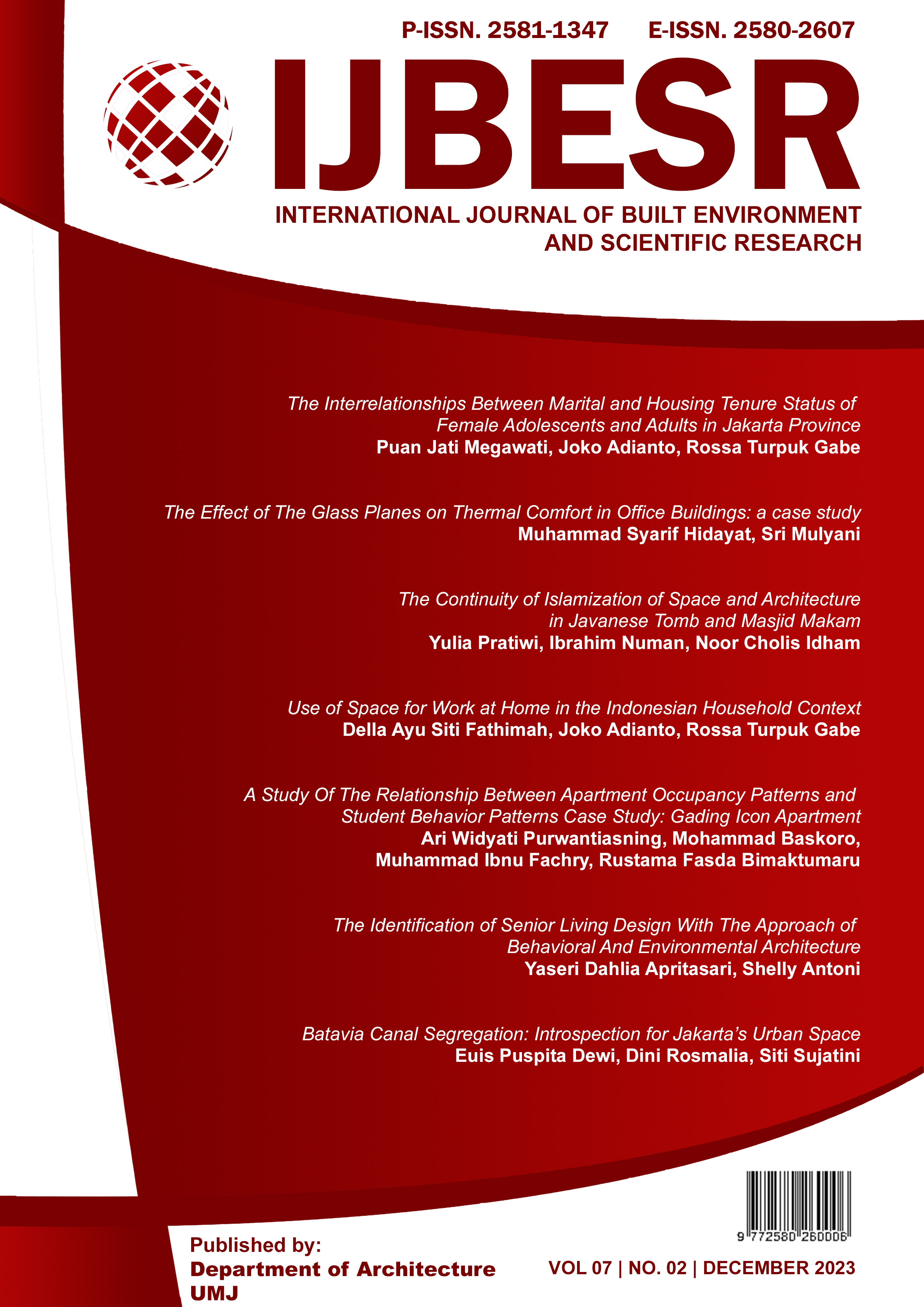Batavia Canal Segregation: Introspection for Jakarta’s Urban Space
DOI:
https://doi.org/10.24853/ijbesr.7.2.157-167Keywords:
Batavia, canal, introspection, segregation, urban spaceAbstract
This research investigates the segregation phenomenon that occurs in Jakarta through the lens of the Batavia Canal, exploring its historical and urbanistic role in shaping the social structure and spatial planning of the city. By focusing on developments over time, this study aims to provide an in-depth understanding of how the canals in Batavia, which characterized the city during colonial times, played a role in establishing the segregation patterns that can be observed today. The research methodology involves historical analysis of canals, literature research, and postcolonial discourse analysis to reveal the correlation between canal structures and segregation patterns in Jakarta's urban space. These findings were integrated with interviews and a participatory approach to understand local community perspectives on the perceived impacts of segregation. The research results highlight how the canals in Batavia are not only physical but also symbolic elements in the formation of urban space. Over time, these canals can become associated with social and economic divisions, creating inequalities in access to city resources and services. The implications of these findings provide a basis for deep introspection into Jakarta's current urban spatial challenges, demonstrating the need for inclusiveness-oriented urban planning to overcome persistent segregation. Thus, this research encourages awareness of the complexity of interactions between physical and social elements in Jakarta's urban space. Directed towards solutions based on an understanding of history and contemporary reality, this study is expected to provide valuable insights for more holistic, equitable and sustainable urban planning in the future.References
Vaughan, L., & Arbaci, S. (2011). The challenges of understanding urban segregation. Built Environment, 37(2), 128-138.
Musterd, S. (2020). Urban segregation: contexts, domains, dimensions and approaches. Handbook of Urban Segregation, 2-17.
Morales, A. J., Dong, X., Bar-Yam, Y., & ‘Sandy’Pentland, A. (2019). Segregation and polarization in urban areas. Royal Society Open Science, 6(10), 190573.
Randon-Furling, J., Olteanu, M., & Lucquiaud, A. (2020). From urban segregation to spatial structure detection. Environment and Planning B: Urban Analytics and City Science, 47(4), 645-661.
Miranda, A. S. (2020). The shape of segregation: The role of urban form in immigrant assimilation. Cities, 106, 102852.
Zwierlein, C., & Wagner, F. (2020). Close distance. Social segregation in trading empires and colonies—An introduction. https://refubium.fu-berlin.de/handle/fub188/29735
Peach, C. (1996). Good segregation, bad segregation. Planning perspectives, 11(4), 379-398.
Livsey, T. (2022). State, urban space, race: late colonialism and segregation at the Ikoyi reservation in Lagos, Nigeria. The Journal of African History, 63(2), 178-196
Grigoryeva, A., & Ruef, M. (2015). The historical demography of racial segregation. American sociological review, 80(4), 814-842.
Candipan, J., Phillips, N. E., Sampson, R. J., & Small, M. (2021). From residence to movement: The nature of racial segregation in everyday urban mobility. Urban Studies, 58(15), 3095-3117







